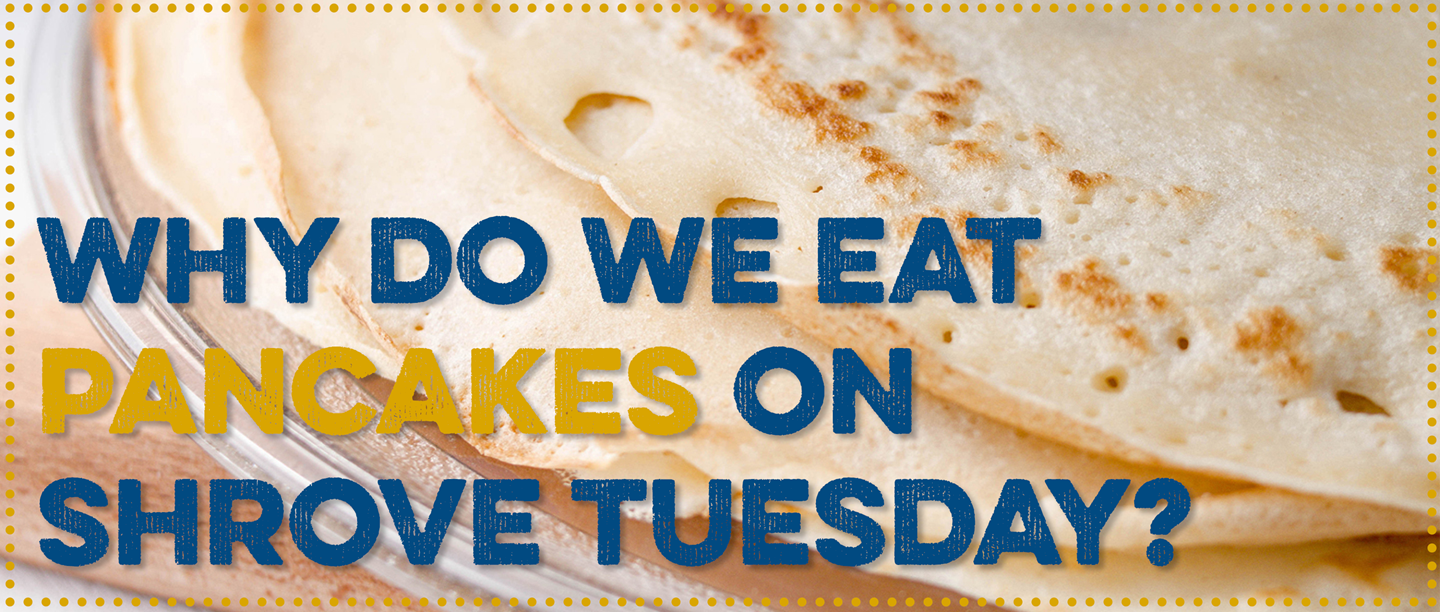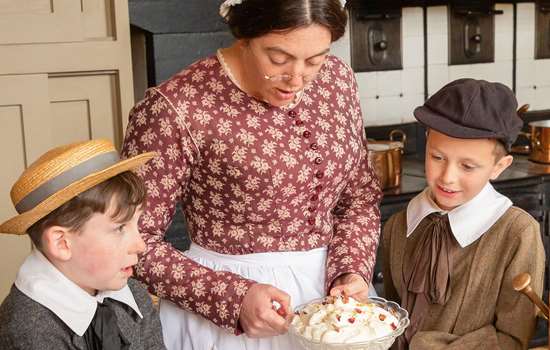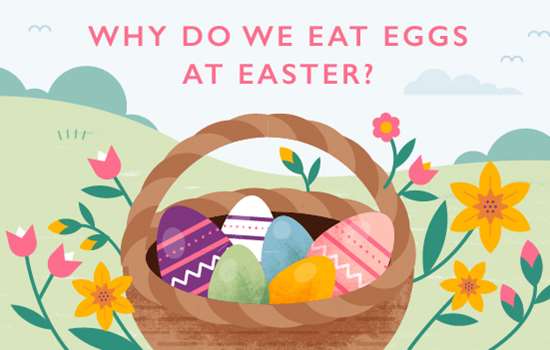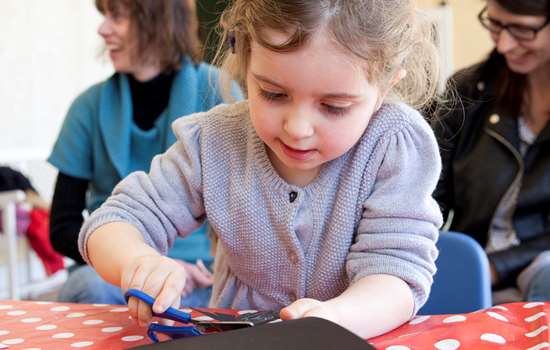Shrove Tuesday, also called Pancake Day, is the feast day before Lent starts on Ash Wednesday. In 2024, Pancake Day will take place on Tuesday 13 February. But why do we eat pancakes on Shrove Tuesday?
On this page you can discover the traditions that led to the creation of this tasty annual celebration and follow Mrs Crocombe’s instructions to make your own delicious pancakes!
What is Shrove Tuesday?
First, let’s take a look at the festival itself. Christians believe that the 40 days before Easter (called Lent) mark the time that Jesus spent fasting in the desert. Traditionally, Christians would spend this time praying and fasting, which meant not eating a range of foods including meat, eggs, fats and milk.
The word ‘shrove’ comes from a Roman Catholic practice – to ‘shrive’ meant going to confess your sins and being absolved by a priest. In the past, a ‘shriving’ bell was rung on Shrove Tuesday to call people to church to confess their sins.
What did Christians have to give up during Lent?
Meat and dairy were not allowed during Lent, but people could eat fish, bread and vegetables.
Some people looked for ways to get around these strict rules. They said that beaver tails could be eaten because these animals lived near and in rivers. Birds that lived on water, like ducks, were called ‘barnacle geese’ as it was believed that they hatched from barnacles – so some people said that these could be counted as fish too!
Let’s take a closer look at some of the foods allowed during Lent:
-
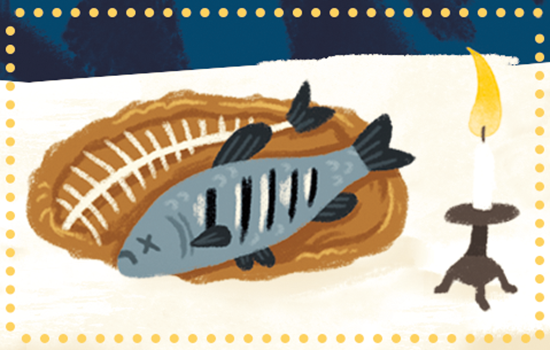
Saintly fish
Fish was thought to be a virtuous (saintly) food, because two of Jesus’ apostles were fishermen. Before fridges and freezers were invented, most fish would have been salted and dried to stop it from going off.
-
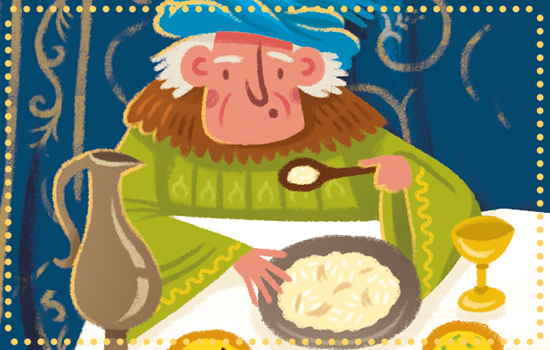
Posh spices
People were allowed to flavour their food with spices during Lent, but they were very expensive. This meant that only rich people could afford spices, which were used in recipes like potage, a kind of stew.
-
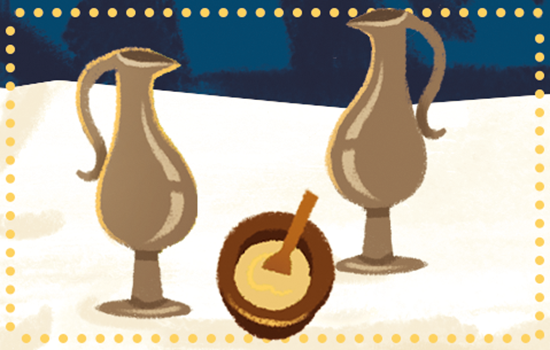
Dairy-free
During Lent, dairy products (including milk, butter, cheese and cream) were not allowed. To make recipes that normally used these ingredients, people replaced them with almond milk and almond butter.
What about monks?
Even when they weren’t fasting for Lent, monks’ diets were controlled by strict rules. The Rule of Benedict was a set of guidelines that decided how a monastery should be run, what the monks could wear and how much food they ate. Walter Daniel, a 12th-century monk who lived at Rievaulx Abbey, wrote that the monks ate a pound of bread (about 454g or a small loaf) and a pint of beans daily. These were split between two meals (although from Easter to September monks were allowed a third meal during the evening).
Under the Rule of Benedict, eating any animals with four legs was forbidden, so monks were mostly vegetarian, but by the 12th century, the rules had relaxed a little. It was decided that the rule banning meat didn’t include birds, so monks could eat things like chicken. Bacon and offal could also be eaten, as these weren’t thought to be ‘real’ meat.
Find out more about what monks ateWhat else did people do to celebrate Lent?
As well as not eating ‘luxury’ foods, during Lent faithful Christians were also expected to give up fun activities, like dancing and playing football. Because of this, the days leading up to Lent (known as ‘Shrovetide’) were a time for celebrating before the strict rules started. Children would go ‘Shroving’ or ‘Lent-crocking’ on Shrove Tuesday, which meant knocking on their neighbours’ doors and singing:
We be come a-shroving,
For a piece of pancake,
Or a bite of bacon,
Or a little truckle of cheese
Of your own making.
Sometimes they would even bring pieces of broken pottery or stones with them to throw at people who refused to give them anything!
A tradition that still exists today is the pancake race. Legend says that it all started when a woman heard the shriving bell calling people to church on Shrove Tuesday while she was making pancakes – and she ran to the church still in her apron with her frying pan! We don’t know whether this story is true, but we think that the first races happened in about 1445.
Why does Shrove Tuesday change date each year?
Like Easter, Shrove Tuesday is on a different date each year because it is calculated using the cycles of the moon, rather than by a calendar date. While this seems very confusing, in the early days of Christianity in Britain it was even more complicated.
Before the 7th century, there were two ways to work out the date for Easter. One way came from Roman missionaries, and the other came from the Irish (or Celtic) tradition. Both methods used cycles of the moon, but were worked out differently, meaning that there were two different dates for Easter every year!
This was very confusing for early Christians, who had to choose which one to follow. So, in 664, there was a meeting at Whitby Abbey in Yorkshire between religious leaders in England, called the Synod of Whitby. They decided that from then on, the Roman method would be used – and it is still used by the Church of England to work out the dates for Easter and Shrove Tuesday today.
So, why do we eat pancakes on Shrove Tuesday?
Finally, the answer to the big question!
Before Lent could begin, all of the foods people couldn’t eat while fasting needed to be removed from the house so that they wouldn’t be tempted to break the rules. And the best way to do that was to eat these foods during Shrovetide.
Meats like bacon would be eaten up on ‘Collop Monday’ (a collop is a thin slice of meat), two days before the start of Lent. On Shrove Tuesday, eggs, butter and fat were used up – and one of the easiest ways to do this was to make pancakes or fritters.
Make your own Victorian style pancakes
Now it’s your turn to tuck into some tasty treats. Watch the video then follow these simple instructions to make Mrs Crocombe’s Victorian pancake recipe. Make sure to ask an adult to help you when using a hot pan.
Ingredients:
- 3 tablespoons of flour
- 142ml (a quarter pint) of milk
- 3 eggs
- Butter, for the pan
Method:
- First, whisk the eggs to mix the whites and yolks together, then add the milk and whisk that in too.
- Add the flour, one tablespoon at a time, and whisk each one in well so that you don’t have any lumps in your mixture.
- Heat a frying pan over a high heat and add a small amount of butter. Let it melt and coat the pan.
- Add in some of your pancake mix and carefully tilt the pan around to coat it evenly.
- Cook for a minute on the first side, then flip your pancake over to do the other side.
- Serve your pancakes warm with a topping of your choice and enjoy!
Historical hint: why not try layering and stacking your pancakes with jam, like Mrs Crocombe does in the video? Then slice them like a cake and share with your family and friends.
Adapted from an article for English Heritage by food historian Sam Bilton. Read the full text here.
Mrs Crocombe's cookbook
In the 1880s, Mrs Avis Crocombe worked in the kitchens at Audley End, a country house in Essex. She wrote down many different recipes in her cookery book, which we are lucky enough to still have today. The cookbook includes lots of Victorian recipes, from pancakes to gingerbread cake, and there is even a recipe for roasted swan!
Click below to find out more about Mrs Crocombe and try another one of her delicious recipes, for Queen Drop Biscuits.
Step into Mrs Crocombe's kitchen
